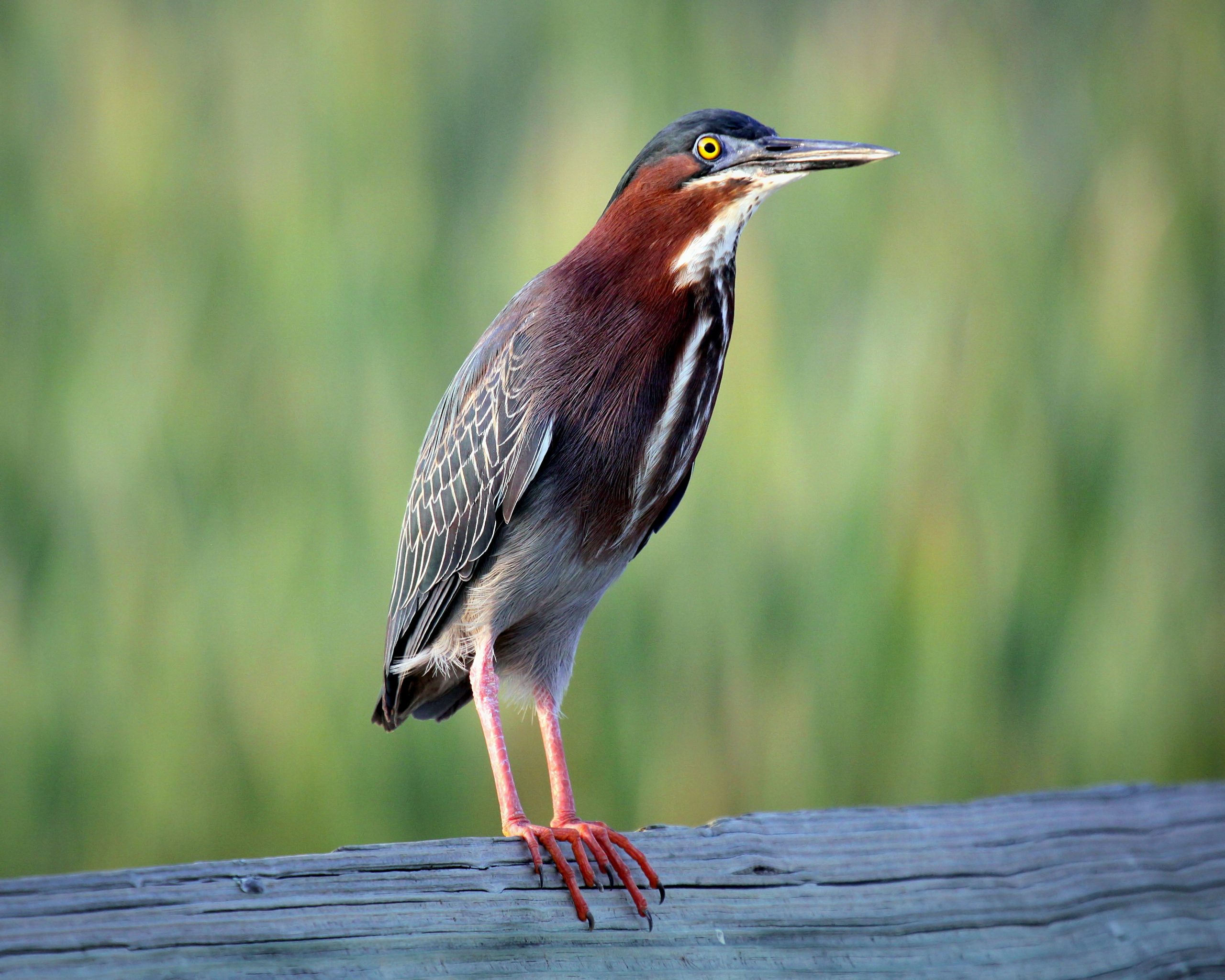by Marilyn Lorenz, photos by Chuck Lorenz
Living near the Gulf coast as we do we have a large assortment of interesting shore birds living around us. One of these is the Green Heron. The smallest of the heron family, these little birds are found throughout the eastern U.S. wherever there is water with plenty of fish available. They are dark in color with greenish-gray backs and bright chestnut fronts streaked with white. A black cap on the head and just a dash green eyeliner, long yellow legs and a straight, sharp bill completes the picture. Both male and female are dressed alike.

Like most herons, they are solitary birds and only get together to mate and raise a brood. While all the other herons, egrets, spoonbills, and storks form associations called rookeries, sort of a birdy apartment building, Green Herons nest in individual pairs as close to water as they can manage. At the SPI Birding and Nature Center the dense mangrove trees provide exactly the conditions that they are looking for, and there are at least a dozen Green Heron nests spaced out among the trees along the boardwalk. One pair even likes to build their nest inside the area where Big Padre lives, using the giant gator as protection against predators, such as raccoons, coyotes, or snakes, that might invade the nest and eat their babies.

There are usually four eggs in a nest and the young hatch out in about twenty-one days. Very quickly the babies begin climbing about in the tree, exploring their new world. They are quite sure-footed and grip the branches like monkeys. Both mom and dad take care of the babies and provide plenty of fresh fish and crabs for nourishment. These youngsters are great fun to watch when they are very young and just learning how to manage those wings and great long legs. Flying can be a bit erratic and landings are comical. They are too young to be afraid of people and are curious about everything. The most common facial expression is mild confusion as they try to figure things out. Once the young ones can fly and have learned how to make a living, they leave the nest and set out to find a place for themselves in the world. Often the parents will start a new brood of eggs and do it all over again.
Green Herons are highly successful and are not considered endangered. You will often see a lone bird moodily hunched up out in the marsh, looking as though he has very serious matters to consider.
June can be a rather quiet season for birders now that all the migrants have gone north, but things will soon be heating up as lots of baby birds arrive on the scene, so stay tuned.


